KALAAT M’GOUNA, MOROCCO: A TOWN OF ROSES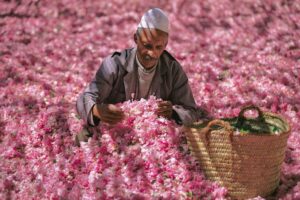
“A rose is an argument. It proclaims the triumph of beauty over brutality, of gentleness over violence, of the ephemeral over the lasting, and of the universal over the particular. The same rose bursts into bloom on the North Cape and in the Sahara desert.“
Alan Meilland El-Kalaa,
M’Gouna Rose Festival
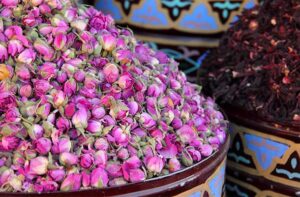 The Rose Festival or Moussem of Roses takes place on the second weekend in May and lasts for two days. Kalaat M’gouna means Valley of the Roses and the city itself is named after the nearby Mount Mgoun, The Kelaat M’Gouna Rose Festival is a unique event in Morocco and is worth the journey for a very special experience. Tucked in this valley is Kelaa-des-Mgouna, a town filled with the fragrance of the rose flower it produces and distills. Since it is another bumper harvest of one of the world’s most adored flowers, the locals organize the Kalaa-des-Mgouna Mgouna rose festival to celebrate the harvest of this luring fragrance of the rose flower.
The Rose Festival or Moussem of Roses takes place on the second weekend in May and lasts for two days. Kalaat M’gouna means Valley of the Roses and the city itself is named after the nearby Mount Mgoun, The Kelaat M’Gouna Rose Festival is a unique event in Morocco and is worth the journey for a very special experience. Tucked in this valley is Kelaa-des-Mgouna, a town filled with the fragrance of the rose flower it produces and distills. Since it is another bumper harvest of one of the world’s most adored flowers, the locals organize the Kalaa-des-Mgouna Mgouna rose festival to celebrate the harvest of this luring fragrance of the rose flower.
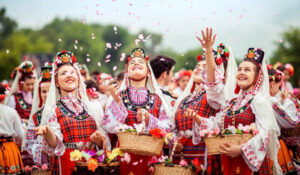 During the festival, not only will you see a spectacular amount of flowers, but also some shops will offer competitions. Traders from all over the region come to sell their specialties and handicraft products. This rather ‘kitsch’ festival would be even more beautiful if real roses were used, rather than plastic flowers and artificial rose scents. However, we predict that the event will soon become a celebration of the real thing.
During the festival, not only will you see a spectacular amount of flowers, but also some shops will offer competitions. Traders from all over the region come to sell their specialties and handicraft products. This rather ‘kitsch’ festival would be even more beautiful if real roses were used, rather than plastic flowers and artificial rose scents. However, we predict that the event will soon become a celebration of the real thing.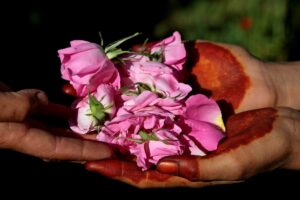
The Festival’s main highlights include a Rose Queen coronation, a festive petal-strewn parade of decorated floats. Street vendors offer various crafts, soaps, perfumes, lotions, oils, and dried roses. Visitors can also try traditional Berber dishes, enjoy local music and dancing.
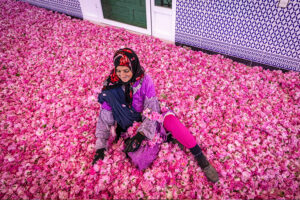 The main event is usually on Saturday from midday where roses are paraded, sold, and bought in plenty. In the late spring months, the city is literally covered in roses. A pink carpet as far as the eye can see dots the otherwise brown landscape. It is believed that pilgrims who arrived in Morocco from Saudi Arabia brought Rosa Damascena, the variety of roses that are grown in this region, with them in the 10th century, and they continue to play a part in the city’s culture today. The festival of roses attracts about 300,000 people to El Kelaâ M’Gouna, located in Tinghir Province, 80 km(50 miles) northeast of Ouarzazate, in the Dadés Valley. Roses are seen in hedgerows and the dried petals are a favorite in the souks all over Morocco.
The main event is usually on Saturday from midday where roses are paraded, sold, and bought in plenty. In the late spring months, the city is literally covered in roses. A pink carpet as far as the eye can see dots the otherwise brown landscape. It is believed that pilgrims who arrived in Morocco from Saudi Arabia brought Rosa Damascena, the variety of roses that are grown in this region, with them in the 10th century, and they continue to play a part in the city’s culture today. The festival of roses attracts about 300,000 people to El Kelaâ M’Gouna, located in Tinghir Province, 80 km(50 miles) northeast of Ouarzazate, in the Dadés Valley. Roses are seen in hedgerows and the dried petals are a favorite in the souks all over Morocco.
Currently, 3 to 4 thousand tons of roses are harvested each year. In order to make one single liter of rose water, there are needed about 3000 kilos of rose petals. Not strange that pure rose water is pretty expensive. There is 4200 km of rose hedges, with the capacity of only 1400 liters of rose water.
Rose cultivation
The Valley of Roses is irrigated by the Asif M’Goun river. The river begins in the M’Goun mountain range nearby, whose summit is the Ighil M’Goun mountain, standing at 4,071 m. Its inhabitants practice subsistence farming here on small plots of land, primarily growing wheat, alfalfa for livestock, and fruit trees. Birch trees are also planted for use as timber.
These plots are all surrounded by rows of wild Damask ro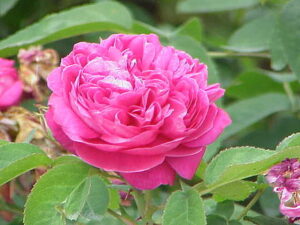 se trees from the Rosa damascena botanical species, which offers excellent protection against ruminants that may damage them. The Damask rose is a deciduous shrub growing to 2.2 meters (7 ft 3 in) tall, the stems densely armed with stout, curved prickles, and stiff bristles. The leaves are pinnate, with five (rarely seven) leaflets. The roses are light to moderate pink to light red. The relatively small flowers grow in groups. The bush has an informal shape. It is considered an important type of Old Rose, and also important for its prominent place in the pedigree of many other types.
se trees from the Rosa damascena botanical species, which offers excellent protection against ruminants that may damage them. The Damask rose is a deciduous shrub growing to 2.2 meters (7 ft 3 in) tall, the stems densely armed with stout, curved prickles, and stiff bristles. The leaves are pinnate, with five (rarely seven) leaflets. The roses are light to moderate pink to light red. The relatively small flowers grow in groups. The bush has an informal shape. It is considered an important type of Old Rose, and also important for its prominent place in the pedigree of many other types.
HARVESTING
Every morning before sunrise, pickers set about harvesting the first rosebuds and rose blooms and placing them into a cotton or jute bag. It is important to pick them up early in the morning or late afternoon, as the sun diminishes the olfactory quality of the roses. The crop is then taken to the Kasbahs for initial sorting.
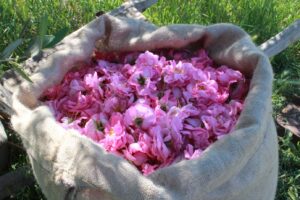 Roses are a very important crop booster to the local population. They also offer a major source of income during the rose season, which begins around 10 April and ends around 20 May, depending on climate conditions. Every morning before sunrise, pickers set about harvesting
Roses are a very important crop booster to the local population. They also offer a major source of income during the rose season, which begins around 10 April and ends around 20 May, depending on climate conditions. Every morning before sunrise, pickers set about harvesting
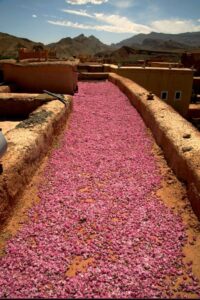 the first rosebuds and rose blooms and placing them into a cotton or jute bag. It is important to pick them up early in the morning or late afternoon, as the sun diminishes the olfactory quality of the roses. The crop is then taken to the Kasbahs for initial sorting.
the first rosebuds and rose blooms and placing them into a cotton or jute bag. It is important to pick them up early in the morning or late afternoon, as the sun diminishes the olfactory quality of the roses. The crop is then taken to the Kasbahs for initial sorting.
Roses are used in Moroccan cuisine and the perfume industry. 3000 petals are used to make a liter of rosewater as the distilling process is complex. As the harvest generally yields 14,000 liters the cost of the product is very expensive. In this region grows ”la Rosa Damascena”. This rose is known for its excellent resistance to cold and drought, but most of its fragrance.
The Rosa Damascena is the most widely-used rose in perfumery. The flowers are renowned for their fine fragrance, and are commercially 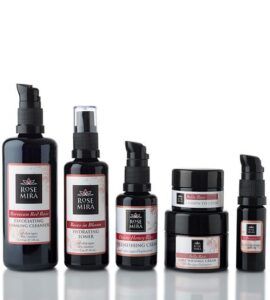
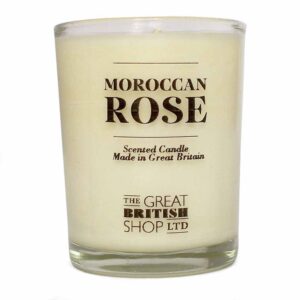 harvested for rose oil (either “rose otto” or “rose absolute”) used in perfumery and to make rose water and “rose concrete”. The flower petals are also edible. They may be used to flavor food, as a garnish, as an herbal tea, and preserved in sugar as gulkand. After sorting, the rosebuds are dried on the terracotta-colored roofs for 2 days, then continue drying in well-ventilated rooms for a further month. The very dry mountain climate provides good drying conditions, whereas humidity would cause the roses to rotting. Once dried, the roses are used to make scented potpourri.
harvested for rose oil (either “rose otto” or “rose absolute”) used in perfumery and to make rose water and “rose concrete”. The flower petals are also edible. They may be used to flavor food, as a garnish, as an herbal tea, and preserved in sugar as gulkand. After sorting, the rosebuds are dried on the terracotta-colored roofs for 2 days, then continue drying in well-ventilated rooms for a further month. The very dry mountain climate provides good drying conditions, whereas humidity would cause the roses to rotting. Once dried, the roses are used to make scented potpourri.
DISTILLATION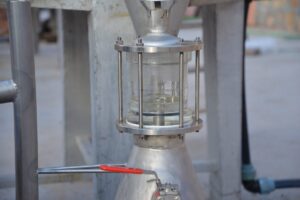
This fragile, precious flower requires meticulous attention. Picked at dawn, before their perfume escapes with the first rays of the sun, they are taken to Kasbah des Roses to be weighed. The roses are then sorted by skilled, fast hands that select flower buds from flowers that have already bloomed. It is these blooms, still fresh, that is immediately placed in the still for slow distillation to capture the delicate and fragrant rose water. Immediate distillation produces authentic rose hydrolat, also called ‘floral water’ or ‘rose water’, which is used locally for ablutions
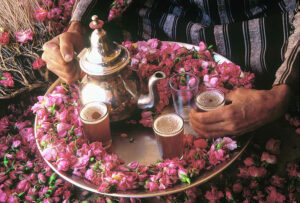
or for flavoring in pastries. Damask rose is also extracted for the premium perfume industry and for essential oil. 1 kg of fresh rose (375 roses) is needed to obtain 1 liter of rose water and just a few drops of rose essential oil. Like nuggets of gold unearthed by a gold panner, these small, fragrant extracts are worth their weight in gold. 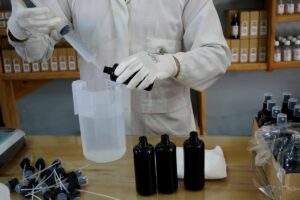
Rosewater is not only used for its fragrance but also for Moroccan traditional cooking. Rose and mint tea give an elevated sense of exotic flavor. It’s worth the extra effort to craft this unique brew, and your guests who were expecting a teabag in a cup will be in awe.
Warning: you may experience a sudden desire to pack your bags and travel to far-off lands!

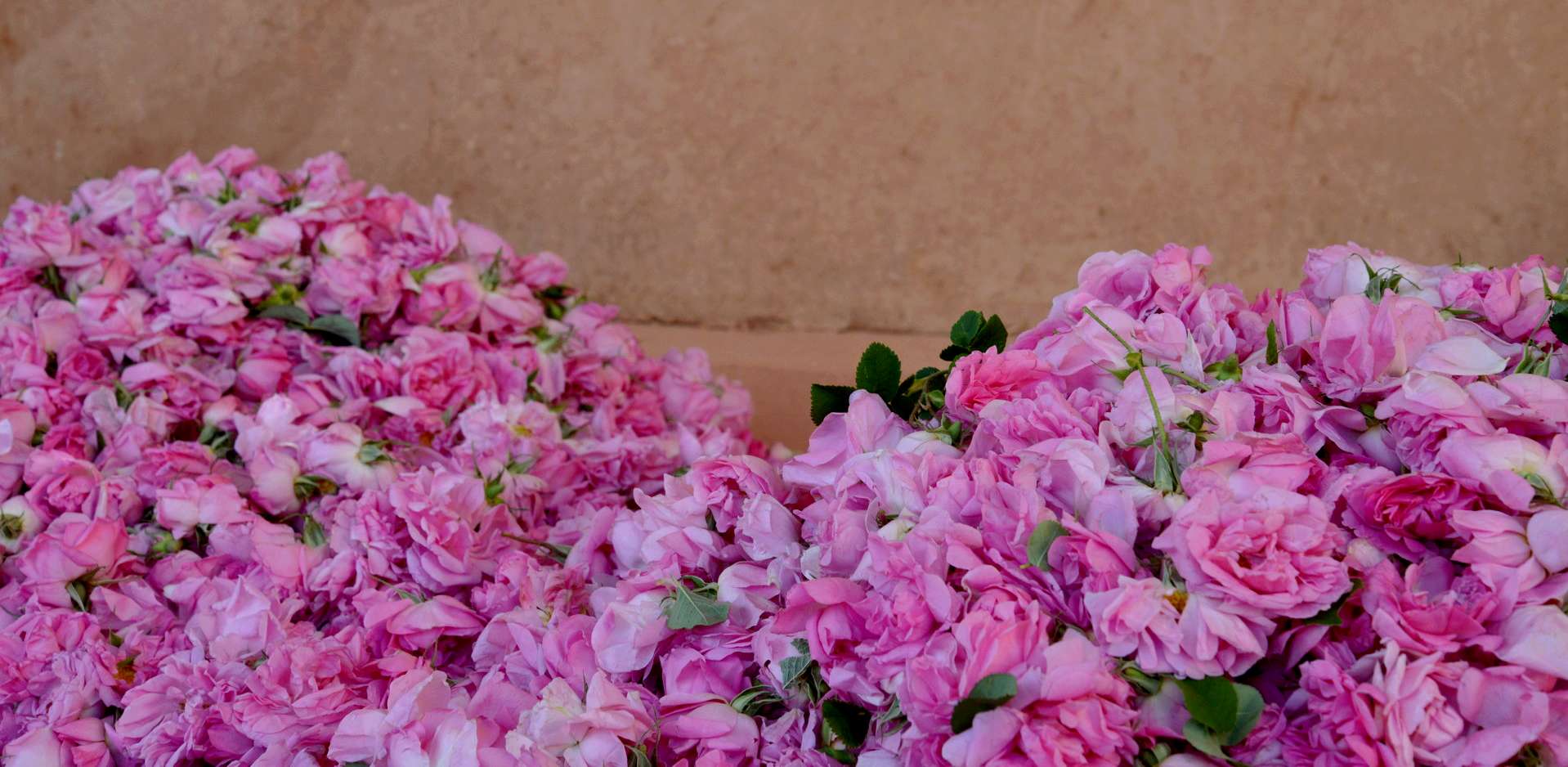

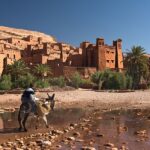
My brother suggested I might like this website. He was totally right.
This post actuallyy made my day. You can not imagine just how much time I had spent for this info!
Thanks!
my blog post: home improvement [schemaeasy.com]
Glad you enjoyed my write-up. Best Regards, Eleanor
I am actually grateful to the owner of this site who has
shared this enormous piece of writing at here.
Thank you. I am happy that you have enjoyed my write-ups. Regards, Eleanor
Great line up. We will be linking to this great article on our site. Keep up the good writing.
Thank you, I appreciate it. Regards, Eleanor
Thank you and best regards, Eleanor
Thank you for your kind comments. Regards, Eleanor
Hi there, just became aware of your blog through Google,
and found that it’s truly informative. I am going to watch out for brussels.
I will appreciate if you continue this in future. A lot of people will
be benefited from your writing. Cheers!
Cheers and thank you!!!
Wow that was unusual. I just wrote an really long comment but after I clicked submit my comment didn’t show up. Grrrr… well I’m not writing all that over again. Anyhow, just wanted to say wonderful blog!
Thank you!!